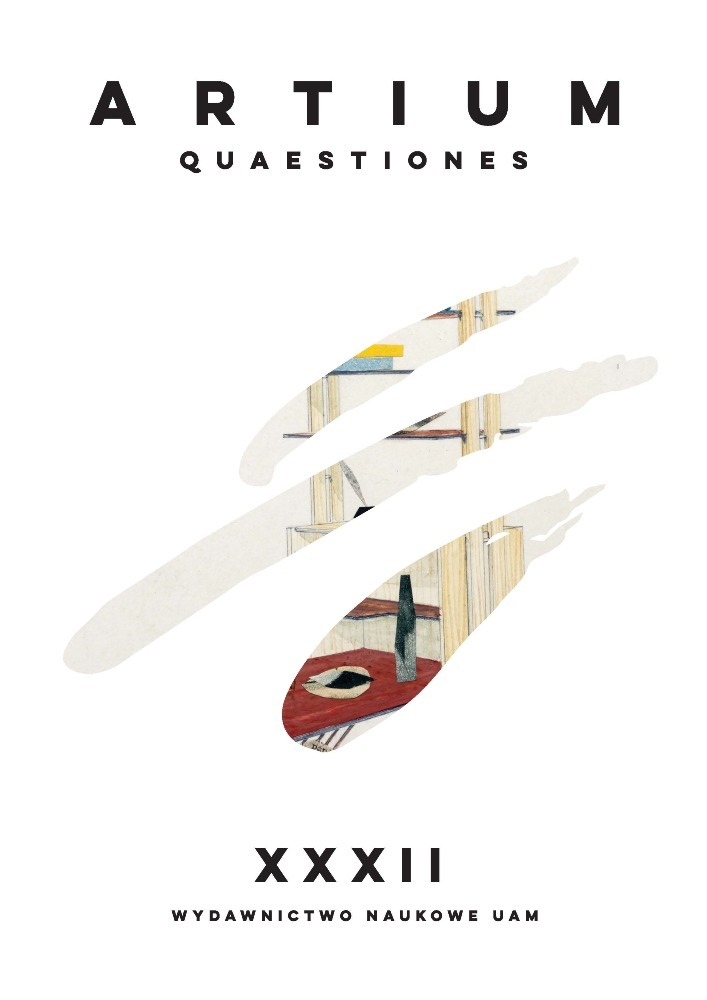Abstract
This article investigates the growing proliferation of curtains and wall hangings as key elements in the design of art exhibitions in the years 1930–1955. To demonstrate how textiles were successfully employed as mediators on the threshold between architecture, design objects, and fine arts, I first examine the increasing use of curtains in the interwar period, Fascist Italy, and Nazi Germany to subsequently explore how the role of fabrics in both countries’ rationalist and neoclassicist architecture also played a significant part in exhibition design after the Second World War. I chart how the interest in textiles culminated in 1955, when glossy plastic curtains were integrated into the exhibition architecture at the first documenta in Kassel, Germany, one of the country’s most prestigious recurring art events to this day. During these politically turbulent decades, the exchange between exhibition designers in both countries was bound together by a profound reassessment of the relation between architecture, design, and art. The renewed consciousness of design as an integrated practice played a key role in 1930s architecture, also providing the foundation for the Bauhaus curriculum and the work of artists, designers, and architects (e.g., Wassily Kandinsky, Giuseppe Pagano, Le Corbusier, Carlo Scarpa, Willi Baumeister, Arnold Bode). I demonstrate that during this period textiles were essential for creating continuity between exhibitions and exhibits of vastly differing styles and contexts. The wall hangings, veils, and banners that were used as part of the monumental spaces created for the Fascist regimes in Italy and Germany were ultimately appropriated and turned into means to undermine the neoclassicist and rationalist style in a way that echoed, I argue, society’s neobaroque sensibility in the aftermath of World War II. Though the Federal Republic of Germany’s first two decades were characterized by the general will to educate its citizens in the aesthetics of internationalism, this effort and the concomitant return to the interwar period were accompanied by a strong resurgence in religiosity and desire for emotionally compelling experiences, which signify a partial disavowal of modernism’s most radical stipulations.
References
"50 Jahre / Years Documenta 1955–2005", eds. M. Glasmeier and K. Stengel, Göttingen 2005
Debord G., The Society of the Spectacle, 3rd ed., trans. F. Perlman, Detroit 1983
Eggler M., “Divide and Conquer: Ludwig Mies Van Der Rohe and Lilly Reich’s Fabric Partitions at the Tugendhat House,” Studies in the Decorative Arts 2009, 16(2), pp. 66–90
Golan R., Muralnomad: The Paradox of the Wall Painting, Europe 1927–1957, New Haven 2009
Holliday K., “Walls as Curtains: Architecture and Humanism in Ralph Walker’s Skyscrapers of the 1920s,” Studies in the Decorative Arts 2009, 16(2), pp. 39–65
Kimpel H., Documenta: Mythos und Wirklichkeit, Cologne 1997
Lanzarini O., “Scarpa: As Italy Sought to Forge Its Cultural Identity, Carlo Scarpa Was Part of an Architectural Movement in Museum Design Reinventing the Display of Italian Art in Historic Spaces,” The Architectural Review 2016, 1427, pp. 47–53
Lilly Reich: designer and architect, ed. M. McQuaid, New York City 1996
Lukach J.M., Hilla Rebay: In Search of the Spirit in Art, New York 1983
Morton T., “Hyperobjects”, Intellectual Deep Web 2019, available online: <https://www.youtube.com/watch?v=JbFOaA3kv5g> [accessed: December 8, 2020]
Nezzo M., “Museen und Museumspolitik im faschistischen Italien in den 1930er Jahren,” in: Museen im Nationalsozialismus: Akteure – Orte – Politik, eds. T. Baensch,
K. Kratz-Kessemeier, and D. Wimmer, Cologne–Weimar–Vienna 2016, pp. 83–98
Rampley M., “Physiology as art: Nietzsche on form,” The British Journal of Aesthetics 1993, 33(3), available online: <https://link.gale.com/apps/doc/A14035645/LitRC?u=gain40375&sid=LitRC&xid=7c34fc24> [accessed: February 8, 2021]
Ros Campos A., “Carlo Scarpa: Architecture, Abstraction and Museography,” VLC Arquitectura 2019, 6(2): pp. 147–174
Rosenblum R., “The Music of the Spheres,” in: Art of Tomorrow: Hilla Rebay and Solomon R. Guggenheim, eds. E. Franzen and E. Weisberger, New York 2005, pp. 218–229
Solomon R. Guggenheim Collection of Non-Objective Paintings: Second Enlarged Catalogue, ed. H. Rebay, New York City 1937
Staniszewski M.A., The Power of Display: A History of Exhibition Installations at the Museum of Modern Art, Cambridge–London 1998
The Museum of Non-Objective Painting: Hilla Rebay and the Origins of the Solomon R. Guggenheim Museum, eds. J. Knox White, D. Quaintance, and K. Vail, New York City 2009
Tymkiw M., “Engaged Spectatorship: On the Relationship between Non-Museum Exhibitions and Museum in National Socialist Germany,” in: Museen im Nationalsozialismus: Akteure – Orte – Politik, eds. T. Baensch, K. Kratz-Kessemeier, and D. Wimmer, Cologne–Weimar–Vienna 2016, pp. 161–176
Tymkiw M., Nazi Exhibition Design and Modernism, Minneapolis 2018
Wallrup E., “Against the Grain: Heidegger and Musical Attunement,” in: Mood: Interdisciplinary perspectives, new theories, eds. B. Breidenbach and T. Docherty, New York City 2019, pp. 70–86
Wingler H.M., The Bauhaus: Weimar, Dessau, Berlin, Chicago, Cambridge 1969
License
The copyrights are regulated by author's statement and publication agreement prepared by Adam Mickiewicz University Press. The authors are responsible for the originality of texts published and regulating the copyrights of accompanying visual materials, unless the materials come from the Editorial Team.
This work is available with the following licence: Attribution-NonCommercial-NoDerivatives 4.0 International License
Attribution-NonCommercial-NoDerivatives 4.0 International License
